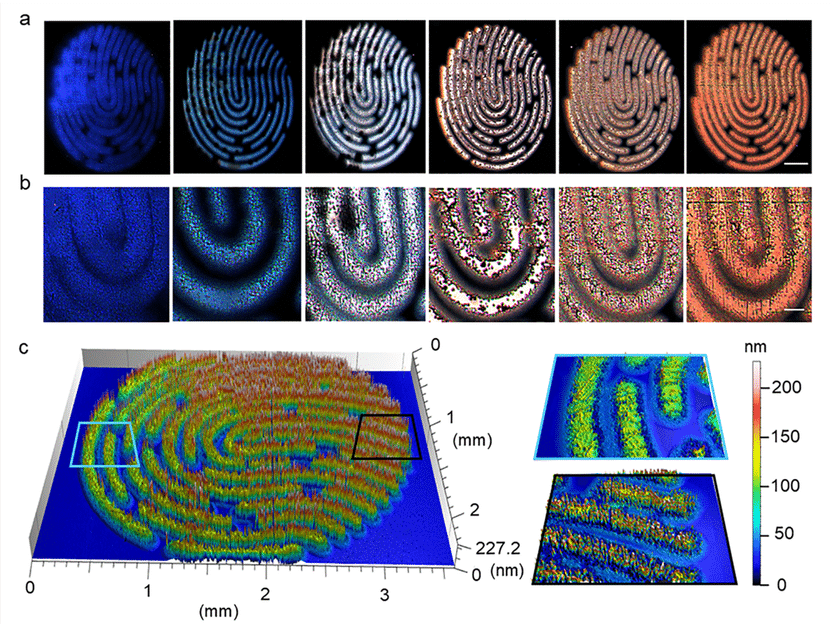Anti-counterfeiting fluorescent marker developed - Sweet code with laser printing
A team of researchers at the Max Planck Institute of Colloids and Interfaces (MPICI) has developed a method that could make it more difficult to counterfeit products in the future. The new and patented method makes it possible to produce unique, non-copyable fluorescent patterns quickly, environmentally friendly and at low costs.

Six different artificial fingerprint patterns with different properties to visualise individual fluorescence and topography. Synthesis parameters were derived from the nanofilm library
© Max-Planck-Institut für Kolloid- und Grenzflächenforschung / Felix Löffler
Counterfeiting of electronics, certificates or medicines causes billions of dollars in economic losses worldwide every year. The World Health Organisation (WHO) estimates that counterfeit medicines account for 73 billion euros in annual sales. According to the WHO, 50 percent of counterfeit medicines are obtained through unauthorised online mail-order companies. To combat this, medicine packaging will be marked with security features across the EU from 2019. Current counterfeit detection materials, such as those used in fluorescent holograms, typically contain toxic inorganic components. In addition, most of these techniques can be copied within 18 months of decoding the fluorescent compound.
The team led by Dr Felix Löffler from the Department of Biomolecular Systems has come up with a completely new approach to non-copyable nanopatterns in a paper published in the journal Nature Nanotechnology: First, a thin sugar film consisting of simple monosaccharides is bombarded with a laser. In this flash synthesis, the sugar "caramelises" in milliseconds, and at the same time the laser prints random "caramel patterns" on a desired surface. These are unique and fluoresce in different colours under the scanner. Junfang Zhang, first author of the study, says: "The exciting thing here is that you can create any pattern you want, which we have shown using the example of artificial fingerprints. The resulting micro- and nanostructures are completely random. We cannot control them; there will be no pattern". Dr Felix Löffler adds: "Each sugar pattern has a unique topography, and depending on the laser parameters and additives, we get unique colour gradations of red, green or blue".
In their experiments, the team created a nanofilm library of about 2,000 nanopatterns. Two scanning methods can be used to quickly and independently read the microstructure of these sugar patterns, which cannot be copied: Fluorescence scanning and topography scanning. Both methods demonstrate almost ideal bit equality, high uniqueness and reliability of the patterns produced. This means that the patterns have a very high degree of randomness, which is important for their function as copy protection. The combination of both methods improves the protection against counterfeiting (PUF = physically unclonable function). "In addition, with our method we can generate up to 10 to the power of 63000 different variants on 1 mm². For comparison, the number of atoms in the universe is about 10 to the power of 89," says group leader Dr Felix Löffler.
Original publication
Other news from the department science

Get the life science industry in your inbox
By submitting this form you agree that LUMITOS AG will send you the newsletter(s) selected above by email. Your data will not be passed on to third parties. Your data will be stored and processed in accordance with our data protection regulations. LUMITOS may contact you by email for the purpose of advertising or market and opinion surveys. You can revoke your consent at any time without giving reasons to LUMITOS AG, Ernst-Augustin-Str. 2, 12489 Berlin, Germany or by e-mail at revoke@lumitos.com with effect for the future. In addition, each email contains a link to unsubscribe from the corresponding newsletter.




















































